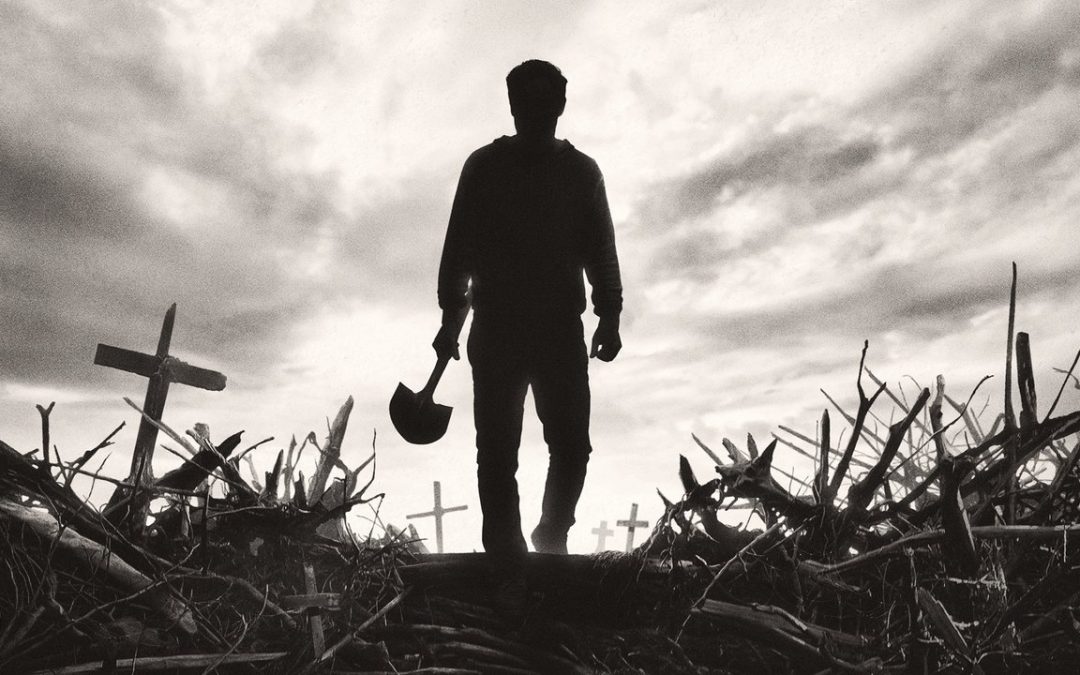The exception is next-door neighbor Jud Crandall (John Lithgow), whose role was flat on paper but comes to life in the actor’s hands. Ellie’s first view of the old man startles her, since Jud looms tall and looks half-feral, with his sun-spotted face and mangy yellow streaks in his otherwise white beard. But there’s a kindness to Lithgow (which Brian De Palma subverted in “Blow Out” and “Raising Cain”) that expresses itself between the movie’s rudimentary lines of dialogue — a crinkle at the corner of his eyes, and a seemingly sincere concern for the young girl’s well-being — and before we know it, Jud has become both Ellie’s friend and our favorite character.
Then Church, the family cat — a Maine coon, of course — is discovered cold and bloody along the road (this is not a film suited to animal lovers). Was it hit by one of those speeding gas trucks? Or devoured by other once-dead pets? Or maybe something’s wrong with Jud, who “discovered” the corpse. In any case, the well-meaning neighbor makes a bad decision, showing Louis the way to bring pets back from beyond, bypassing the usual burial ground and guiding him through the vast CG wilderness to a cliff where digital lightning flashes as the two men perform the ritual that will be repeated a ridiculous number of times before the film’s over.
If cats have nine lives, as the proverb implies, it should surprise no one to see a missing kitty reappear after such an incident. But how many do people have? That’s the intriguing follow-up question Louis is forced to consider after a terrible accident turns one of his kid’s birthday parties into a funeral. The infamous truck scene effed up many a viewer of the original “Pet Sematary” — especially kids, scarred by exposure to a film that terrorizes its young characters. The directors count on that when re-creating the incident here, altering a few key details and updating its sense of exploitative pathos for the 21st century: That dramatic effect, where the grief-stricken father falls to his knees and unleashes a skyward scream, has become too recognizable a trope for them to recycle here.
Kölsch and Widmyer, the duo behind 2014’s Hollywood horror movie “Starry Eyes” (and several episodes of MTV’s “Scream” series), do a decent job of creating atmosphere, especially in a handful of dreams that position the audience for hallucinatory jump scares, and they intensify the frequent flashbacks Rachel experiences of her late sister’s last days, but there’s the distinct feeling that they’re not doing nearly enough to distinguish this version from the one that came before.
One undeniably disturbing upgrade: The character of Victor Pascow (played here by Obssa Ahmed), who arrives at Louis’ hospital with his brains falling out of a gaping head wound and reappears throughout to usher warnings, will be hard to erase from your mind. The filmmakers have also tweaked the humor to reflect our new post-“The Conjuring” sensibility, where audiences can be sure that the characters know when they’re making bad ideas — such as walking into a dark basement doorway or lying down beside a zombified family member in bed — and go through with it anyway, sparking inevitable laughter.
What has changed with horror in the three decades since the original’s unforgettable “No fair” ending? Instead of dreading the casualties, audiences now cheer on the “kills,” which is a troubling way to process the resurrected Creed child’s disturbing agenda. Without the kind of small details that make these characters come to life, it’s easy to feel that they exist only to be dispatched according to the directors’ whims. Most of their fates are directly repeated from the earlier version, although a radical departure is made with the film’s ending. Maybe you can teach a dead cat new tricks after all.

